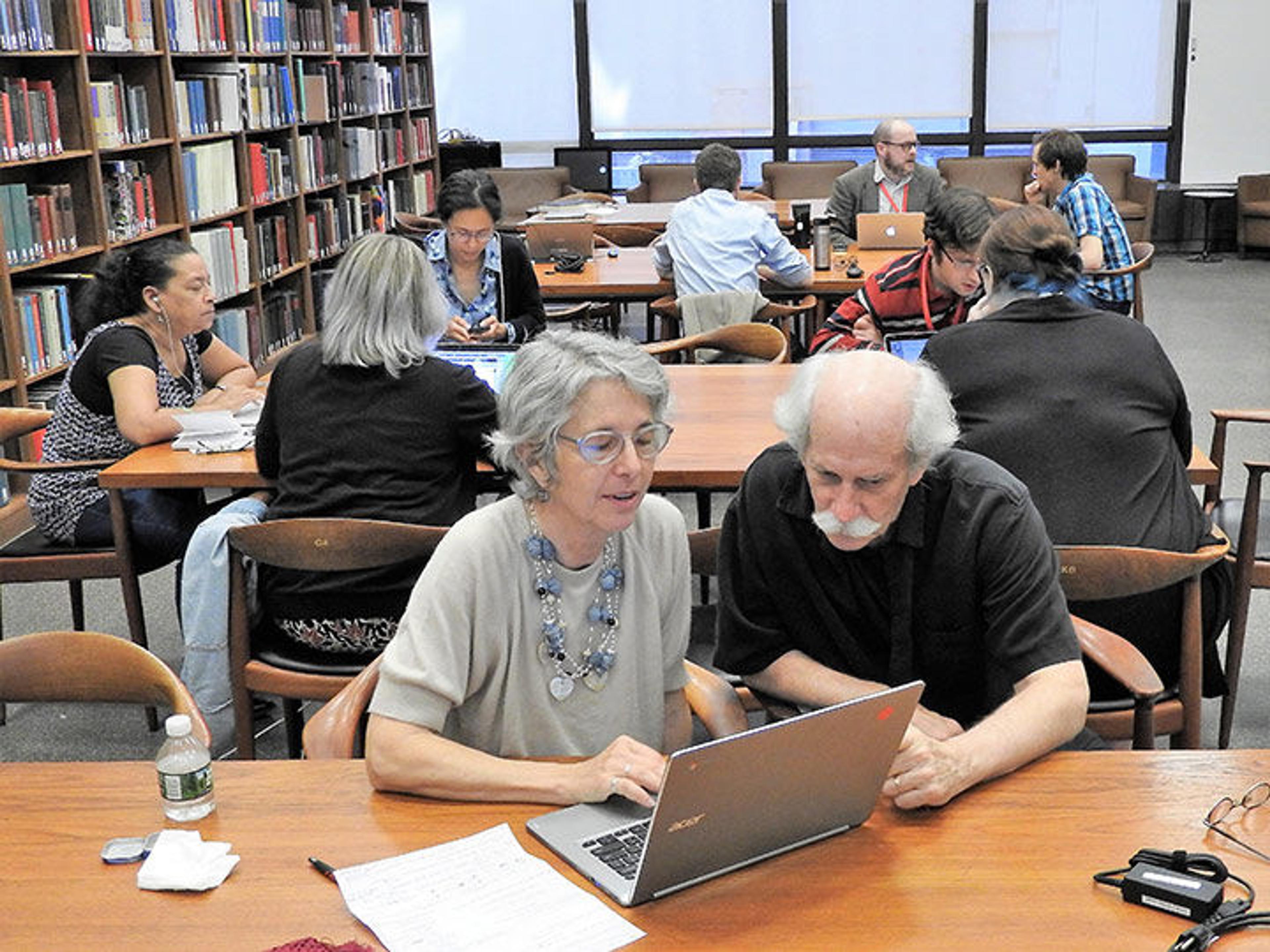
Participants at The Met Open Access edit-a-thon in May 2017 at the Thomas J. Watson Library. Photo by Jim Henderson
«For the past 12 months, I've had the honor and opportunity to pursue an experiment at The Met: serving as the Museum's first Wikimedian-in-Residence. Through varying kinds of projects, I've tried to explore how an encyclopedic museum can intersect with the free encyclopedia, and how open access to images and ideas can allow collaboration between expert and volunteer communities. The idea was to make The Met collection's online presence more visible by taking images of works from the Museum's website and integrating them more fully into Wikipedia and Wikimedia, two widely used platforms. The goal I set for myself was to "Wiki-fy The Met, and Met-ify the Wiki"—to bring Wikipedia's collaborative spirit to the Museum, while also bringing The Met's scholarly expertise to Wikipedia.»
Our work has been built by many hands over the past year, and I've experienced the joy of exploring an artwork with curators, the thrill of working with others to make large-scale changes, like uploading images and improving data, and the serendipity of discovering new articles written by Wikipedia editors.
Winter began in a blizzard of images, artwork data, and finding meaningful ways of representing both. In February, the Museum announced the release of more than 375,000 high-resolution images of Met artworks into the public domain. Much work went into finding the best fit between The Met's catalogue model (which has its own idiosyncrasies) and the models used on Wikipedia, Wikimedia Commons, and Wikidata. There were questions about how to match artists listed under one name by The Met, and another on Wikimedia. Should dates of works of art be expressed as a range of years, or as "circa"? How would we deal with overlapping cultural and geographical categories? How would we group works of art by artistic medium and genre? As we have tackled these problems, it's been a pleasure to see The Met collection slowly integrated into Wikipedia, and to see how works of art serve as visual inspiration for article-writing efforts.
Spring had a more gentle feel, as we shifted our emphasis to expert and curator participation. Visiting artworks with curators, and seeing them in depth, I was better able to appreciate the written and unwritten aspects of the scholarly tradition and the expertise necessary to sort outdated from still-relevant sources, which became especially important as we focused on "Met-ifying the Wiki" by improving selected articles with images and scholarship from the Museum.
In the summer, we had our Met Open Access edit-a-thon, based on a complementary effort to "Wiki-fy The Met." It's been my experience that Wikipedia is not fundamentally a technology-driven project, but a humanistic one, and we were glad to work with The Met's Thomas J. Watson Library to encourage online contributors to join our efforts. In May, we had about 20 edit-a-thon participants join us at the Museum for a day of editing, in which we made use of The Met's images to illustrate articles on Wikipedia. We had an online component as well, and the total result was more than 40 articles written by editors from around the world, and many more images added as part of this online campaign.
Fall saw the two strands come together in the Wikipedia Asian Month edit-a-thon. In November, leading up to the event, we worked with curators to develop a list of important artworks in The Met's Asian collections, images of which could be used to expand or create Wikipedia articles. Then we welcomed about 25 edit-a-thon participants, including a number of academics, to the Ruth and Harold D. Uris Center for Education for a full day of editing. We focused the online campaign this time more directly on writing articles as well as adding images. We were thrilled with the results of the edit-a-thon, which combined on-site and online participation to produce over 250 new articles written in 14 languages, contributing to the spirit of international cooperation that drove Wikipedia Asian Month.
As I come full circle, my mind drifts to future models and possibilities, and all of the options yet to be pursued. But we are already making an impact: Wikipedia articles illustrated by images of The Met collection were read 10.5 million times in November, many of them linking to further information from MetPublications. As we broaden our reach, we also want to deepen it, sharing more of the love of knowledge that binds the encyclopedic museum and the free encyclopedia.